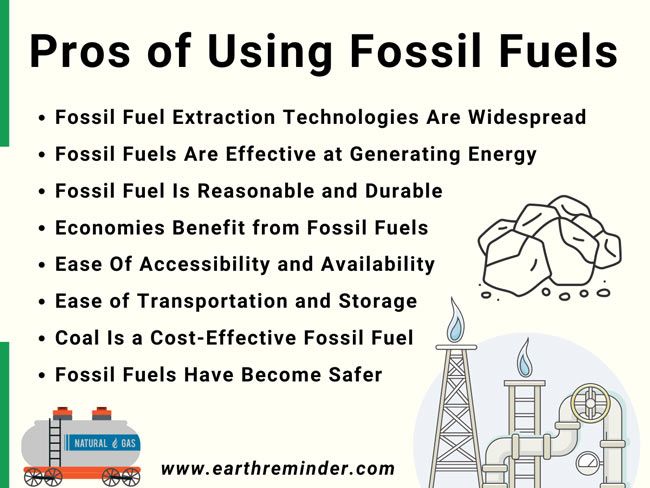Is Solar Heating Or Cooling?
Since the mid-20th century, the effects of climate change have become increasingly clear. Rising global temperatures, shifting weather patterns, and more extreme weather events all point to a warming planet. In the face of these challenges, renewable energy sources like solar have gained attention as a way to reduce greenhouse gas emissions that drive climate change. But an interesting question arises: Is solar energy itself heating or cooling for the climate?
On one hand, solar energy is praised as a clean fuel that displaces fossil fuels, which produce large amounts of planet-warming carbon emissions. But solar farms and panels do cause local changes, like altering landscapes. So determining whether solar energy has an overall heating or cooling effect requires looking at its complex interactions with the local environment and global climate.
How Solar Energy Works
Solar panels, also known as photovoltaic (PV) panels, are made from silicon, a semiconductor material that contains free electrons. When sunlight hits the solar panel, the photons from the sunlight excite the electrons in the silicon and cause them to break free from their atoms. This process generates an electric current as the electrons flow through the panel. The electric current generated can then be captured and used to power electrical devices and equipment (Source 1).
As the photons from sunlight knock electrons free in the solar panel, excess energy is converted into heat. Solar panels can get quite hot in full sunlight. Most solar panels have a glass covering that allows the sunlight to pass through to the solar cells but prevents the excess heat from escaping easily. The back of the panel is designed to dissipate heat into the air to prevent overheating of the solar cells (Source 2). So while solar panels harness the energy from sunlight and convert it to electricity, heating is a byproduct of the underlying physics involved.
Solar’s Impact on the Local Environment
Solar panels absorb sunlight and convert it into electricity, which can have a cooling effect on the local environment below the panels. Research has shown that solar panels can significantly warm the surrounding urban area during the day by absorbing sunlight, but also cool the environment at night as heat dissipates from the panels (Source). The shade provided by solar panels can result in lower surface temperatures below the panels compared to areas exposed to direct sunlight. This local cooling effect can help mitigate urban heat islands in cities, where dark paved surfaces and lack of vegetation lead to higher temperatures than surrounding rural areas. By installing solar panels on rooftops and over parking lots and highways, cities can combat the urban heat island effect and reduce peak energy loads for cooling.
Solar’s Global Impact
Solar energy can have both warming and cooling effects on the global climate. On one hand, solar panels absorb sunlight and convert it into electricity, preventing some of the sun’s radiation from heating the Earth’s surface. According to a NASA article, increased solar activity between 1750-1950 contributed to a slight global cooling effect, countering some of the warming from greenhouse gas emissions during that time period1. However, this impact was small compared to the warming influence of human-caused emissions.
On the other hand, the expansion of solar energy reduces greenhouse gas emissions from fossil fuels, helping mitigate climate change. A Princeton study found that generating electricity from solar rather than fossil fuels could reduce the frequency of extremely hot days in some regions by up to 2 degrees Celsius by mid-century2. Overall, the net impact of increased solar capacity is a reduction in global temperatures, as the greenhouse gas mitigation effects outweigh the small surface cooling effects.
Growth of Solar Energy
Solar energy has experienced exponential growth over the past decade. According to the Solar Energy Industries Association (SEIA), the solar industry has grown at an average annual rate of 24% since 2000 (https://www.seia.org/solar-industry-research-data). In 2021 alone, the United States installed 23.6 gigawatts of solar electric capacity, reaching 122.8 total installed gigawatts, enough to power 22.7 million American homes.
Projections show that growth will continue as solar energy becomes more cost competitive with fossil fuels. The SEIA predicts that by 2030, solar will quadruple and provide 20% of U.S. electricity (https://www.seia.org/solar-industry-research-data). The International Energy Agency forecasts that solar PV capacity will reach over 2,500 gigawatts globally by 2026, with an average annual growth of 15% (https://www.iea.org/energy-system/renewables/solar-pv). key drivers for this growth include falling costs, supportive policies and targets, and increasing demand for clean energy.
Challenges and Limitations
While solar energy has many benefits, it also comes with some limitations in its ability to meet all energy needs. One of the biggest challenges with solar is its intermittency. Since solar energy relies on sunlight, it cannot produce electricity at night or when skies are cloudy. This inconsistency means solar often needs to be paired with energy storage solutions like batteries to provide a steady supply of power (Source 1). Areas that have extended periods of cloudy weather may find it difficult to rely solely on solar.
Energy storage for solar can also be expensive. Batteries large enough to power homes or buildings are a significant added cost. Other storage solutions like pumped hydroelectric require specific geographic conditions that are not available everywhere. The intermittent nature of solar remains one of the biggest obstacles for it becoming a primary energy source.
Space requirements can also pose challenges for solar. Collecting meaningful amounts of energy often requires large arrays of photovoltaic panels. Space-constrained applications may not have the real estate needed for enough solar panels. While advances in solar cell efficiency are helping shrink this footprint, it remains a practical limitation in many cases (Source 2).
Overall, while solar holds great potential as a renewable energy source, its intermittency and space requirements pose real challenges to it meeting all energy demands. Continued technology improvements and lowered storage costs may help overcome these limitations in the future.
Other Renewables Comparison
Solar power has some key differences when compared to other renewable energy sources like wind and hydropower in terms of climate impact. According to the UN, renewable energy sources like solar, wind, and hydropower emit little to no greenhouse gases when generating electricity, in contrast with fossil fuels which are major contributors to global warming (https://www.un.org/en/climatechange/raising-ambition/renewable-energy). However, each renewable option has some unique properties.
Wind power relies on constructing large wind turbines, often grouped together in wind farms, that use airflow to spin turbines and generate electricity. Wind power emits no greenhouse gases during operation, but can have a larger physical footprint on the local environment compared to solar panels. According to MIT, hydropower utilizes flowing water, like in dams, to drive turbines and is a renewable option best suited to locations near rivers or streams (https://climate.mit.edu/explainers/renewable-energy). Hydropower emits no greenhouse gases but altering waterways can impact local ecosystems.
In contrast, solar photovoltaic panels can be installed on rooftops and unused lands near existing transmission infrastructure, minimizing environmental impact. Solar has modular scalability, allowing distributed generation closer to where power is consumed. Overall, solar energy has among the lowest negative impacts when compared to other renewables in terms of greenhouse gas emissions and local environmental footprint.
Policies to Incentivize Solar
There are several key policies and incentives at the federal, state, and local level aimed at encouraging greater adoption of solar energy in the United States. According to the Solar Energy Industries Association (SEIA), utility-scale solar has been providing clean, stable energy for over two decades thanks in part to supportive policies (https://www.seia.org/initiatives/federal-state-regulatory-policy). At the federal level, tax credits have played a major role. The federal Investment Tax Credit (ITC) currently allows both residential and commercial solar customers to deduct 26% of installation costs from their federal taxes. This policy has catalyzed massive growth since it was established in 2006. State renewable portfolio standards that require utilities to source a percentage of their electricity from renewables like solar have also driven adoption. Over half of U.S. states have implemented an RPS. At the state level, net metering policies fairly compensate solar producers for excess electricity sent back to the grid. Local jurisdictions like cities and counties also offer solar incentives like permit fee waivers and property tax exemptions. Overall, smart policies have proven critical for the solar industry’s expansion and have allowed solar to compete with heavily subsidized fossil fuel energy.
The Future of Solar
Solar energy has enormous potential for continued growth and expansion in the coming decades. Studies project that solar power could provide up to 20% of total global electricity generation by 2027. With supportive policies and technological advances, some experts estimate solar could meet up to 50% of global energy demand by 2050.
As adoption of solar energy increases, the long-term climate impacts could be significant. Widespread solar power generation would greatly reduce reliance on fossil fuels like coal, oil, and natural gas. According to National Renewable Energy Laboratory, solar energy could potentially power up to 14% of U.S. transportation demands by 2050. This would lead to major reductions in greenhouse gas emissions from the transportation and power sectors.
However, solar does come with some environmental concerns to consider, such as land use for large solar farms, disposal of retired PV panels, and mining of rare minerals needed for manufacturing panels. With careful planning and policies, the long-term climate benefits are expected to outweigh these challenges. Overall, projections indicate continued solar power development could play a major role in transitioning global energy systems to be cleaner and more sustainable.
Conclusion
Determining whether solar energy has an overall cooling or heating effect on the environment is complex. While the sunlight that powers solar technology does heat the Earth’s surface, solar panels themselves don’t contribute directly to global warming. In fact, by offsetting CO2 emissions from fossil fuel energy sources, solar may have a net cooling effect globally.
However, on a more local level, solar farms can impact ecosystems and microclimates through factors like changes in albedo and landscape. Careful site selection and mitigation strategies are important when installing large-scale solar projects.
On the whole, solar energy remains one of our most promising tools for reducing greenhouse gas emissions and mitigating climate change. With the right policies and continued innovation, solar power can keep growing as an emissions-free energy source. We all have a role to play in supporting and advocating for broader adoption of solar technology and other renewables. Our energy choices today will shape the future of our planet.






